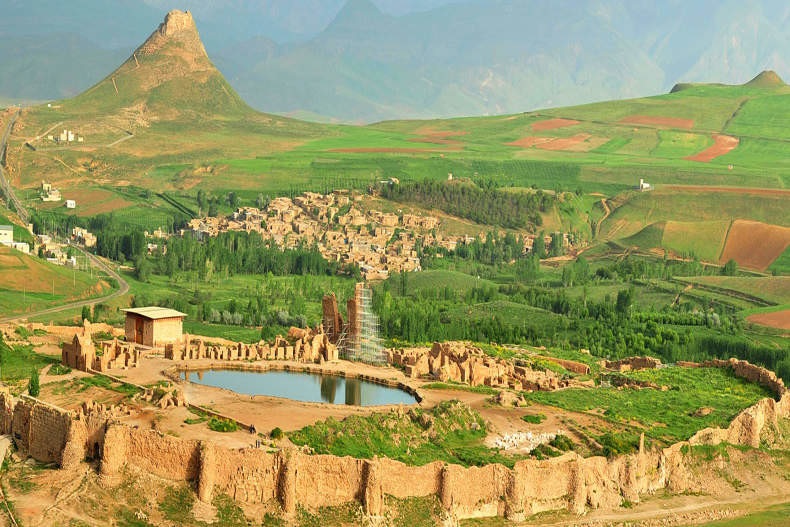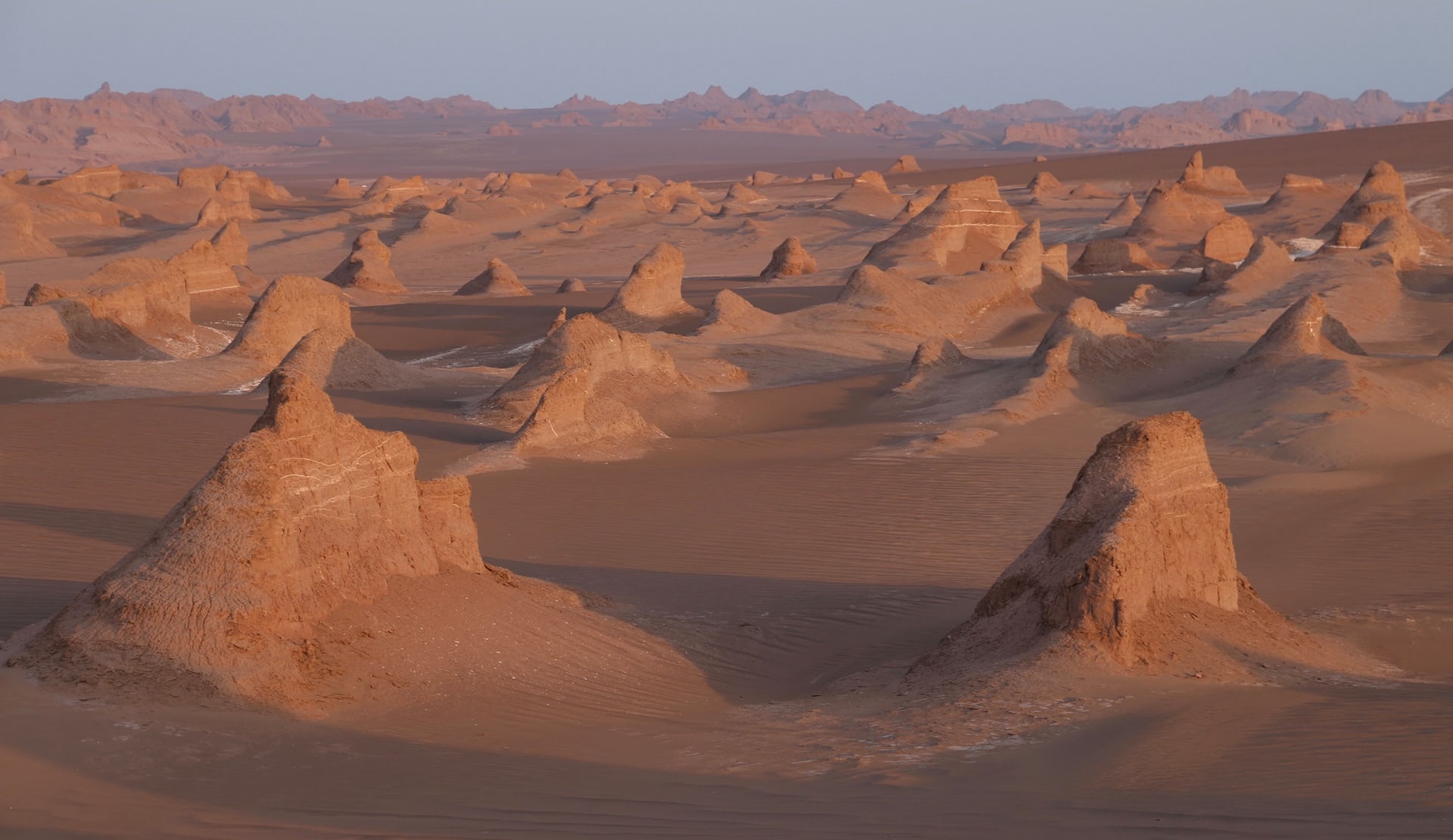Iran enjoys a rich and diverse tangible heritage, with 27 sites currently inscribed on the UNESCO World Heritage List. These sites showcase the historical, cultural, and architectural marvels of the ancient and modern Iranian civilization. Here's a glimpse into some of the prominent UNESCO-listed tangible heritage sites in Iran:
1. Persepolis (1979): The majestic ruins of the Achaemenid Empire's ceremonial capital, showcasing intricate carvings and monumental structures like the Apadana and Gate of Nations.

2. Pasargad (2004): The founding city of the Achaemenid Empire, featuring the iconic tomb of Cyrus the Great and remnants of palaces and gardens.

3. Bisotun (2006): Home to the famous Bisotun Inscription, carved by Darius the Great, which tells the story of his rise to power and serves as a key source for understanding Achaemenid history.

4. Susa (2015): An ancient city with a 9000-year history, containing the remains of Elamite, Achaemenid, Sassanid, and Islamic-era settlements.

5. Takht-e Soleyman (2003): A spectacular archaeological site with a rich history, encompassing a Sassanid fire temple, a Zoroastrian monastery, and a medieval Islamic city.

6. Meidan Emam, Esfahan (1979): this magnificent square is flanked by stunning architectural marvels like the Sheikh Lotfollah Mosque and the Ali Qapu Palace.

7. Masjed-e Jāmé of Esfahan (2012): One of the oldest and most prestigious mosques in Iran, known for its exquisite tilework, calligraphy, and architectural innovations.

8. Golestan Palace (2013): A stunning royal palace complex in Tehran, showcasing Qajar-era architecture and interiors filled with intricate decorations and artwork.

9. Sheikh Safi al-din Khānegāh and Shrine Ensemble in Ardabil (2010): A breathtaking complex of Sufi dervish buildings, featuring vibrant tilework, calligraphy, and stunning stained glass windows.

10. Shushtar Historical Hydraulic System (2009): A fascinating network of interconnected tunnels, bridges, and dams built over 2000 years ago, showcasing ancient engineering prowess.

11. Cultural Landscape of Maymand (2015): An ancient troglodyte village carved into the cliffs, offering a glimpse into traditional Iranian village life and architecture.

12. Cultural Landscape of Uramanat (2021): A picturesque mountainous region with terraced villages and unique architectural styles, reflecting a harmonious relationship with nature.

13. The Historical City of Yazd (2017): renowned for its mudbrick architecture, wind towers, and Zoroastrian heritage.

14. The Persian Gardens (2011): are a style of garden design that originated in the Achaemenid Empire (550-330 BC) and have been continuously developed and adapted over centuries. They feature a quadripartite division with water paths running through each of the four sections and converging at a central pool or pavilion. They also make use of vegetation, with a focus on trees, flowers, and shrubs that are adapted to the local climate with the integration of architecture, pavilions, and terraces.

15. The Persian Caravanserai (2023): encompassing 54 different caravanserais located across Iran, these historical buildings served as roadside inns, providing shelter, food, and water for travelers, pilgrims, and merchants traversing the ancient trade routes of Persia.

16. Trans-Iranian Railway (2023): built between 1927 and 1938, it stretches for 1,394 kilometers, connecting the Caspian Sea in the north to the Persian Gulf in the south.

17. The Sasanian archaeological landscape in the Fars region (2021): encompasses eight significant archaeological sites spread across three geographical areas in southeastern Iran: Firuzabad, Bishapur, and Sarvestan.

18. Hyrcanian Woods (2019): are a sprawling expanse of lush, temperate broadleaf and mixed forests stretching along the southern shores of the Caspian Sea in Iran and Azerbaijan. This ancient ecosystem, dating back 25 to 50 million years, is a mesmerizing tapestry of towering trees, diverse plant life, and abundant wildlife.

19. Lut Desert (2016): is a vast and otherworldly landscape located in southeastern Iran. Spanning an area of approximately 51,800 square kilometers, it's the 33rd-largest desert in the world and holds the title of the hottest place on Earth, with temperatures recorded as high as 80.8°C.

20. The Persian Qanat (2016): is a fascinating ancient water management system holds significant historical and engineering value.

21. Shahr-i Sokhta (2014): meaning ‘Burnt City’, is located at the junction of Bronze Age trade routes crossing the Iranian plateau. The remains of the mudbrick city represent the emergence of the first complex societies in eastern Iran. Founded around 3200 BC, it was populated during four main periods up to 1800 BC, during which time there developed several distinct areas within the city.

22. Gonbad-e Qābus (2012): the 53m high tomb built in ad 1006 for Qābus Ibn Voshmgir, Ziyarid ruler and literati, near the ruins of the ancient city of Jorjan in north-east Iran, bears testimony to the cultural exchange between Central Asian nomads and the ancient civilization of Iran. The tower is the only remaining evidence of Jorjan, a former center of arts and science that was destroyed during the Mongols’ invasion in the 14th and 15th centuries.

23. Tabriz Historic Bazaar Complex (2010): Tabriz has been a place of cultural exchange since antiquity and its historic bazaar complex is one of the most important commercial centers on the Silk Road. Tabriz Historic Bazaar Complex consists of a series of interconnected, covered, brick structures, buildings, and enclosed spaces for different functions. Tabriz and its Bazaar were already prosperous and famous in the 13th century, when the town, in the province of Eastern Azerbaijan, became the capital city of the Safavid kingdom.

24. Armenian Monastic Ensembles of Iran (2008): consists of three monastic ensembles of the Armenian Christian faith: St. Thaddeus and St. Stepanos and the Chapel of Dzordzor. These edifices - the oldest of which, St Thaddeus, dates back to the 7th century – are examples of outstanding universal value of the Armenian architectural and decorative traditions. They bear testimony to very important interchanges with the other regional cultures, in particular the Byzantine, Orthodox and Persian.

25. Soltaniyeh (2005): the mausoleum of Oljaytu was constructed in 1302–12 in the city of Soltaniyeh, the capital of the Ilkhanid dynasty, which was founded by the Mongols. Situated in the province of Zanjan, Soltaniyeh is one of the outstanding examples of the achievements of Persian architecture and a key monument in the development of its Islamic architecture. The octagonal building is crowned with a 50m tall dome covered in turquoise-blue faience and surrounded by eight slender minarets.

26. Bam and its Cultural Landscape (2004): is situated in a desert environment on the southern edge of the Iranian high plateau. The origins of Bam can be traced back to the Achaemenid period (6th to 4th centuries BC). Its heyday was from the 7th to 11th centuries, being at the crossroads of important trade routes and known for the production of silk and cotton garments. The existence of life in the oasis was based on the underground irrigation canals, the qanāts, of which Bam has preserved some of the earliest evidence in Iran. Arg-e Bam is the most representative example of a fortified medieval town built in vernacular technique using mud layers.

27. Tchogha Zanbil (1979): the ruins of the holy city of the Kingdom of Elam, surrounded by three huge concentric walls, are found at Tchogha Zanbil. Founded c. 1250 B.C., the city remained unfinished after it was invaded by Ashurbanipal, as shown by the thousands of unused bricks left at the site.
